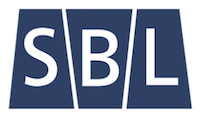
At our 2017 ASI conference, I had so many great workshop choices that for once, I was glad to come home to an indexing project and put what I learned to practice. Usually, after a conference (and a 6 am flight home), I like to have a few days to recover and catch up on laundry, but I couldn’t wait to give Kendra Millis’s editing tips a try.
Like most indexers, I’m constantly chasing an elusive speed-to-quality ratio that ensures a high hourly rate and an excellent index. Lately, that quest has focused on trimming my editing time without missing mistakes. Here are some tips from Kendra’s presentation, Margie Towery’s incomparable Ten Characteristics of Quality Indexes, and one of my own.
Fix It Early
This seems like a given, right? If you are mid-index and you realize there’s a better word to use for a concept, or you’ve gotten a name mixed up, or missed an important discussion, you stop what you’re doing and fix it. That’s sometimes easier said than done! When I start a project, the first thing I do is break up the pages into daily quotas, and when it’s 1:35 and I have to leave to pick up my son in 10 minutes and I still have 30 pages to go, the last thing I want to do is backtrack. This is the time to remind yourself of a psychology principle and give a gift to future you. If you fix it now, you won’t have to fix it later (and—key point here—you won’t have to remember what exactly you meant to fix).
Create AIRs
Indexer Margie Towery talks about Adjustable Indexing Rules (AIRs). These are project-based rules—how many undifferentiated locators you will allow (5? 8? You decide what’s best based on the book and its audience). Will you use acronyms or spelled-out versions in your subheadings? What about cross-references and double posting? I try to use See cross references for all synonyms and only put locators at one heading, and then at the end, evaluate which is the best to use as the main entry or if I should double-post. In her presentation on indexing military books, Kendra mentioned having a go-to set of standard subheadings to ensure parallel entries and clear, complete coverage. Make the decisions at the beginning, and then stick with them. If you get to the end and you realize your AIR wasn’t the best way to handle something, it’s easier to change everything all at once, and you’re less likely to miss something.
Use a Checklist and Batch Tasks
This is one of my own tricks, and it’s really helped speed the editing process for all those things you just can’t do on the go. I have a Cindex file of all my common mistakes and things to just watch out for—typical spelling errors, cross references, careless punctuation. I also do my editing in a very specific order because I find the mental energy required of the tasks varies, and batching similar tasks makes the work go faster. My particular editing order is below, because I like to start with something simple and work my way into the tough structural stuff once I’m warmed up.
- remove unnecessary subentries
- create subentries
- reword subentries
- combine subentries
- pick up additional locators from text (I’m trying to wean myself off of this one and fix these as I go)
- group/gather from within the index (make sure all locators are the same wherever a topic is in the index)
- flip acronyms
- spell check
- compile errata for author
Your checklist will likely be different, but there you go. One final tip: If you’re interested in editing your index on screen, either in a PDF reader or on a tablet, here’s a post I wrote recently about creating custom PDF stamps.
What are some of your editing-as-you-go techniques?
PI Pick of the Week
If you’re a member of ASI, I highly recommend you join a Special Interest Group if you haven’t already. If you’re a SIG member, don’t forget about your SIG email list—it’s a great way to tap into the collective knowledge of people well-versed in your subject. If you’re seeking an indexer, many SIGs have websites that feature directories of members—use those in conjunction with ASI’s Indexer Locator to find someone with the expertise you need. Check out the SIGs here.



Leave a Reply